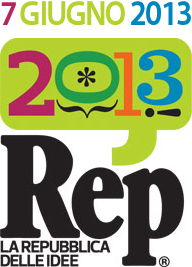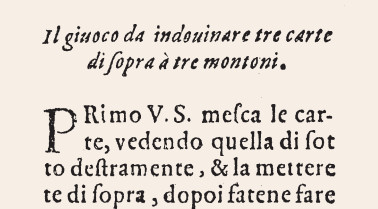
How do criminal organizations monitor the election results? With a magician’s trick. It is one of the revelations made by Roberto Saviano at “La Repubblica delle idee” event. The method has a specific name. In criminal slang, it is the “ballerina ballot”. The term refers to a ballot paper that is lost at the polling station, then used to control the vote. It is voted outside, then given to the first “victim”, who puts it in his pocket. At the polling station, the person receives a virgin ballot, goes into the cabin, puts the clear one in his pocket and then deliver that already voted. Then the clear one is brought out, voted properly and given to a second person.
The first reference to this principle, applied to playing cards, appears in a 1593 book written by Horatio Galasso from Arienzo, near Caserta, in the same geographical area where Saviano was born. The method was offered to the reader not for criminal purposes, but to enchant an audience with a demonstration of (alleged) clairvoyance (“The game to guess three cards above three decks.”)

Horatio Galasso d’Arienzo, Giuochi di carte bellissimi di regola e di memoria, Venezia, 1593, p. 21.
Image provided by The Conjuring Arts Research Center, New York City.
Every trick, however, has its B-side – and we can not exclude that it was used for less legitimate purposes. The suspect raises by reading an English book, published a few years before, whose author wrote to warn the reader – rather than to train him in the art of conjuring. In 1584 Reginald Scot, in his The Discovery Of Witchcraft, avoided the risk of providing illegal means, saying and not saying:
Here I should also mention the particular deceptions used in the casting of lots, and drawing of cuts. I dare not teach the methods used, lest the ungodly make a practice of it in the commonwealth, where many things are decided by such means, which can be done honestly and lawfully. (1)
It was my friend Mauro Ballesio who suggested me the link between the method offered by Galasso and Scot’s reference. Mauro is a magician reminiscent of the use of the same principle when he was at his secondary school. Since the chemistry teacher pulled out at random the person to be involved in the interrogation, the method was useful for predicting who would be extracted, in order to minimize the commitment to study:
During the first extraction, not without a good deal of risk and audacity, the student in charge of the draw secretly took two numbers, one (secretly) for himself and one to be handed to the Professor. The first interrogation was sacrificial. But the student indicated by the second number (carefully and secretly kept until the following week) could “plan” the interrogation, knowing for sure that it would be “magically” extracted next time. In fact, the extraction was done in the a manner similar to the first, but this time the student introduced the hand holding the hidden number, took a new one by holding it in secret and handed over the old to professor, who then involved in the interrogation the student who – without being psychic – already knew the outcome of the draw. (2)
Reginald Scot had conceived The Discovery of Witchcraft after witnessing, as a Justice of the Peace, in a trial for witchcraft in Rochester. The tortures sentenced against Margaret Simons impressed him enough to push him to undertake an extensive research of the tricks with which to produce extraordinary effects, excluding the diabolical intervention on which the accusations against the poor witch focused.
With the guidance of the French magician Cautares, Scot therefore produced a monumental work on witchcraft that will go down in history as the first English text to – indirectly – deal with magic tricks. Written with the intent to warn against a too easy application of the adjective “evil” to magical phenomena, the book suffered the same consequences faced by the witches of the time: King James VI of Scotland sentenced to burn all the copies in circulation. Some books were saved from the flames and today the Discovery is a document of inestimable value, not only from the point of view of stage magic: for the time it was published, it was one of the most enlightened attempts to use Reason in the legal field, two centuries before the cornestone Of Crimes and Punishments (1763) by Cesare Beccaria.
1. Reginald Scot, The Discovery Of Witchcraft, 1584, Book XIII, Chapter 33.
2. Mauro Ballesio, “Mentalismo… di classe!” in Praestigiator.com, 7.11.2012.
BY-NC-SA 4.0 • Attribution-NonCommercial-ShareAlike 4.0 International